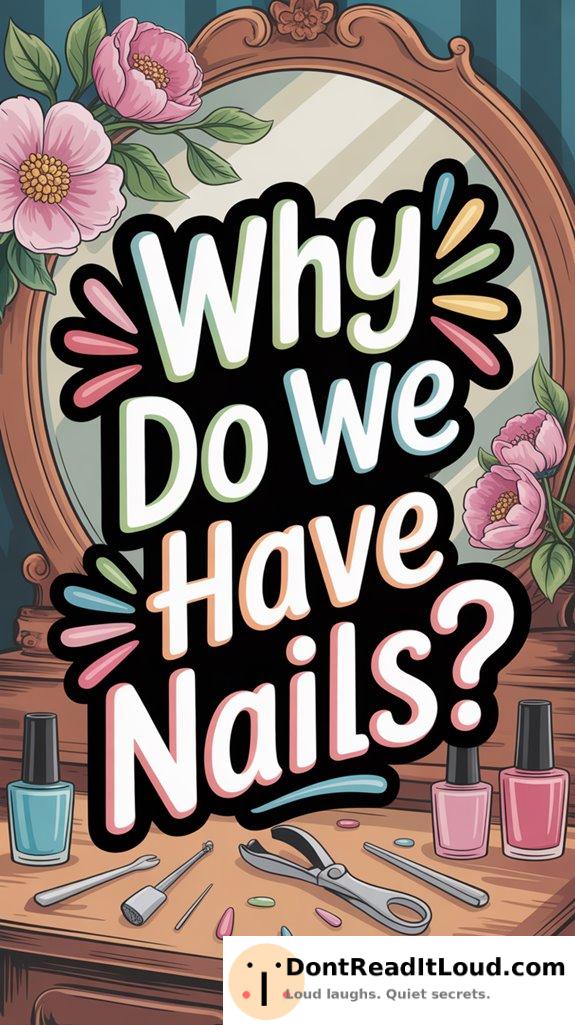
Your nails are a piece of evolutionary history. They evolved from the claws of ancient ancestors, helping with grip and survival. Nails protect your fingertips, improve your ability to grasp objects, and can reveal signs of health issues. Keeping them healthy involves good hygiene and regular moisturizing. Additionally, nails can offer insight into your overall well-being.
The Evolutionary Journey of Nails
Although nails might seem like simple parts of the human body, they’ve a remarkable evolutionary history. Imagine ancient ancestors swinging through trees, relying on their grip. Nails, which developed from claws, gave them a much stronger hold. After all, no one wants a lineage of clumsy primates.
The origins of nails offered critical survival advantages. They made it easier to use tools—crucial for early humans who definitely lacked instruction manuals. Nails became versatile tools themselves, perfect for scratching, prying, or even opening a tricky snack.
Biological Functions of Human Nails
When you consider the biological functions of human nails, it’s clear they’re more than just decorative. Sure, nail art is fabulous, but nails are like the Swiss Army knife of your fingers. They protect the tips of your digits, making sure you can scratch that itch or peel an orange without turning your fingers into mush.
Nails also provide a counterforce when you grasp objects, enhancing your grip so you can hold onto your morning coffee without a caffeine disaster.
Nails grow at a rate of about 3.5 millimeters per month, which is surprisingly quicker than your hair. Apparently, your body prioritizes fingernails more than you might expect.
Nails as Health Indicators
Nail ridges? These aren’t just cosmetic quirks—they can signal nutritional deficiencies.
While you enjoy your manicure, remember your nails can reveal important health information.
Tips for Maintaining Healthy Nails
To keep your nails healthy, focus on good hygiene and nourishment. After all, nobody wants nails that resemble a chewed-up pencil! Start by washing your hands regularly and drying them well.
Moisturize your hands often, treating them with care.
Remember, nail care isn’t just for professionals. Trim and file your nails to prevent snags that can catch on fabric.
If you enjoy nail art, let your nails rest between manicures to keep them looking their best.
Lastly, eat a balanced diet—strong nails need more than just pizza, no matter how much we wish otherwise!
Conclusion
Human nails have evolved to protect our fingertips and help us perform everyday tasks. They also improve our sense of touch and support precise movements. Additionally, nails can reflect underlying health issues, often showing symptoms before other signs appear. To keep your nails healthy, eat a balanced diet, maintain good hygiene, and avoid damaging habits. Appreciate the important roles your nails play and care for them to keep them strong.



